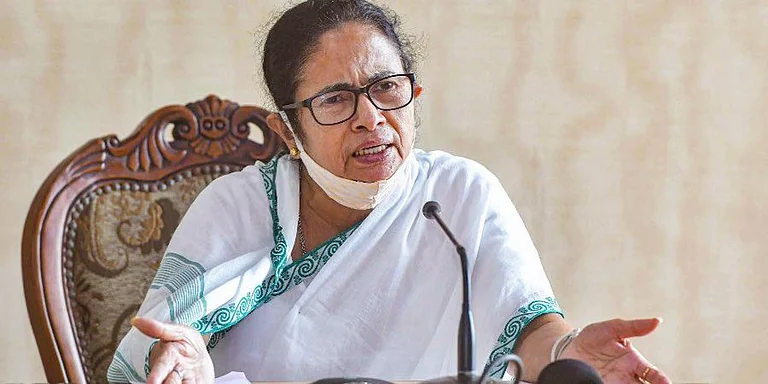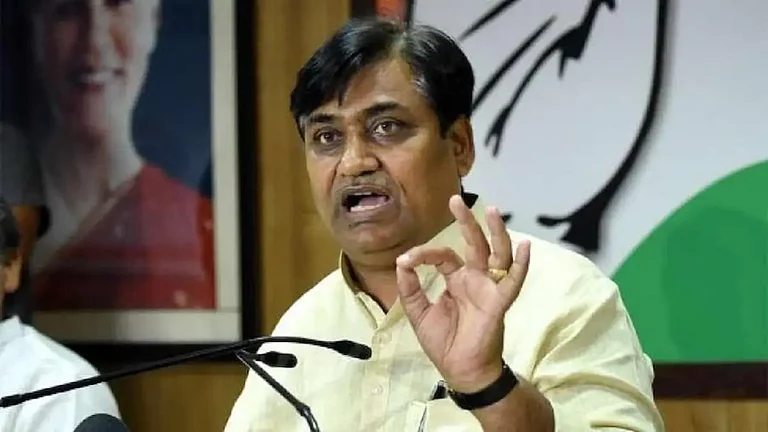A simple vote, without food, shelter and health care, is to use first generation rights as a smokescreen to obscure the deep underlying forces which dehumanise people.
—Nelson Mandela
What do the ‘have nots’ not have? A home, to begin with. In big Indian cities, the inadvertent ‘have nots’ live on the line between having and not having, somewhere between the spatial and the emotional, in homes that both are and aren’t. The ‘home’ of Kapuri Devi and Naresh, for instance, is a patchwork of abandoned canvases and oilcloths stitched up to form a canopy under a metro bridge in east Delhi. Like a child’s make-believe fort made out of used bedsheets.
They had once lived in a brick house somewhere on the Yamuna floodplains, but it was razed some years ago and they have been on the move since. Two wandering dervishes with hazy memories, living in a memory fort made of mementos of their lives and former homes: a bed that once had a room, a bike that once had a garage, a gas stove that once had a kitchen, all stowed away inside the fragile fort. They carry them around from one makeshift home to the other, perhaps in a bid to not become invisible. “But it’s like they don’t see us,” Naresh says.
Development Has a Different Name
Demolitions in the name of development have been a common feature of city planning in India since Independence. In Delhi itself, data collected by the Missing Basti Project shows at least 280 slum cluster demolitions in the capital between 1990 and 2020. The actual numbers, activists aver, are much higher. According to a 2022 report by the Housing and Land Rights Network (HLRN), both central and state government authorities across India were responsible for demolishing 36,480 homes in 2021 alone, leaving nearly 2 lakh people homeless. At least, 1,123 homes were demolished in Delhi in 2021, affecting over 5,000 people.

“Eviction is definitely an important cause of homelessness in cities. The crisis became even more heightened after the Covid-19 pandemic, which drove up property prices and made renting places impossible for the urban poor in the city,” Anagha Jaipal of HLRN tells Outlook.
When it comes to rehabilitation, eviction victims have several hurdles to cross. In Delhi, for instance, only those evicted from land owned by state government agencies or departments such as Delhi Jal Board are applicable for rehabilitation. Those living on land owned by central government agencies like the Delhi Development Authority (DDA) or Indian Railways are not eligible for compensation. The 2019 Ajay Maken & Ors. vs Union Of India & Ors case, after the Shakur Basti evictions from the railway land in 2015, questioned this distinction. The Delhi High Court in its order observed that people living on land owned by the Delhi government within the city’s territory cannot be distinguished from those on land owned by central agencies within the same city. It also made the Delhi Urban Shelter Imporvement Board the nodal agency for all kinds of eviction and rehabilitation and laid down principles against automatic slum demolition. The high court used constitutional provisions, international law and principles of social justice to recognise that all residents of the city, irrespective of their legal status, had what French sociologist Henri Lefebvre has called a “right to the city”.
Kamlesh Mishra, an advocate of the Delhi High Court, who represents a number of slum residents across the city in eviction-related litigations against state and central agencies states that in case the land on which a slum cluster exists is needed for development or public interest purposes, the land-owning agency needs to survey all the people inhabiting the area, draw a plan for the rehabilitation of all the eligible persons and set deadlines for the same. After preparing such a plan, the agency has to put out the lists of people eligible for rehabilitation. Only after these and other steps are followed by the administrative body can a slum cluster be removed.
“Not many of these criteria are met in Delhi,” Mishra rues.
Slums of Despair
Ajab Singh, a daily wage worker, lived in the T-Huts of the Gyaspur Basti overlooking the peak of Humayun’s Tomb in south-east Delhi for nearly three decades before the shanties were demolished last year. In 2015, he and his family lost the farms they had cultivated for generations after the National Green Tribunal declared the groundwater in the area poisonous and banned the cultivation of agricultural crops in the contested Yamuna floodplains. In August 2022, a day after his family celebrated the festival of Raksha Bandhan, they lost their home too.

They weren’t the only ones. About 300 families living in the protected Yamuna floodplains in the Sarai Kale Khan area were rendered homeless after the DDA demolished rows of temporary settlements that had existed in the area for several decades. Now, the DDA has built a park where their homes once stood. Singh and his family have since been living in a thatch and bamboo hut inside the park, covered with a patchwork of saris and rags, waiting for the bulldozers to show up. “I have proof of residence, electricity bills, but no one cares,” he states.
In a 1962 paper titled “A Theory of Slums” published in Land Economics magazine, economist Charles J. Stokes distinguishes between ‘slums of hope’ and ‘slums of despair’. While the first category refers to the living spaces of people with the ability for employability and ‘escalator’ classes harbouring aspirations for upward mobility, the second refers to the homes of people not considered employable or profitable to the state and are from what Stokes called ‘non-escalator’ classes.
In Delhi, evictions by land-owning authorities like the DDA often have the habit of converting slums of hope into slums of despair by rendering the people living in them unemployable, unproductive and fighting for bare necessities.
Caught Between DDA and Thugs
Raju, a vegetable vendor, whose house on the Yamuna floodplains was demolished in June 2022, claims that since the demolition, life has become very uncertain. “We are living under a heap of mud dug up by the DDA to hide from authorities,” he says. His wife says that the family lives in fear of snakebites. “Earlier, we used to have a house made of brick and a roof made of asbestos. We had electric connections and piped water,” she adds. The family, which includes three children and an elderly mother, makes ends meet by selling vegetables every day. “Even a one-room house on rent costs Rs 4,000–5,000. We cannot afford that,” Raju says.
Bulldozers are not the only threat to slum dwellers. They also have to keep the local thugs happy. Many of those displaced by evictions in the Sarai Kale Khan area complain of local Gujjar strongmen who collect rent from basti residents in return for allowing them to set up temporary settlements on disputed or public land.
Arjun Singh, a daily wager who claims to have lived in Gyaspur Basti for over two decades before the slums were demolished, says that he and his family pay Rs 800 as monthly ‘rent’ to a local Gujjar ‘community leader’ by the name of Balraj and his brother to stay on the land owned by the DDA. “When the bulldozers come, he disappears. When we build our homes elsewhere, they demand rent or they break the homes. We are suffering from both sides.” Arjun’s infant son has been sick for the last eight days due to the cold wave. “We need the tent over our heads to keep the kids alive in this biting cold. So we have to pay,” he adds.
No Roof Over Their Heads
At the root of the issue of flailing land rights of the urban poor is perhaps the lack of any clear policy to provide permanent housing to the growing numbers of homeless and urban poor. According to Sunil Aledia, executive director of the Centre for Holistic Development, which works for the rights of homeless population and informal settlers, there is no policy that properly looks at housing for the poor in Delhi. “They evict people without planning for rehabilitation. This only adds to the homeless population of the city. And there are no housing schemes for the homeless. Shelter homes are just temporary solutions,” Aledia states.
The Delhi government has 195 shelters for the homeless, whose numbers swell every winter, leading to overcrowding. However, owing to the raucous environment, lack of safety, privacy and hygiene, especially for women, many urban poor families choose to live on roadside pavements. The problem lies in the state’s repeated refusal to acknowledge the rights of the poor and accord them dignified ways to live.
Land rights activists claim that in most cases, urban slum clusters mushroom around the so-called ‘elite’ and ‘high society’ neighbourhoods that survive by outsourcing blue-collar errands. “Slums are created by the needs of the rich but only the poor are evicted for development,” Aledia says. A case in point is Pinki Gupta, a tea stall owner in Kashmere Gate, who has been living with her bags packed for days in fear of a bulldozer showing up. Her father, who passed away due to Covid-19 in 2021, had built the tea shop when she was a kid. It is the only source of income to feed herself, her alcoholic husband, two children and an unmarried younger sister. Now, the Delhi Jal Board has put up a notice asking her to vacate.
Pinki’s father had also owned another house by the Yamuna River, where she grew up, but it was demolished in 2006 along with around 300 other houses. Pinki claims that only some of the occupants were rehabilitated or compensated. “I am fighting to remain in this house, because I have a big family and don’t know where else to go. Though legally mine, only a miracle can save my home now,” she says.
(This appeared in the print edition as "Hitting Below the Belt")


























